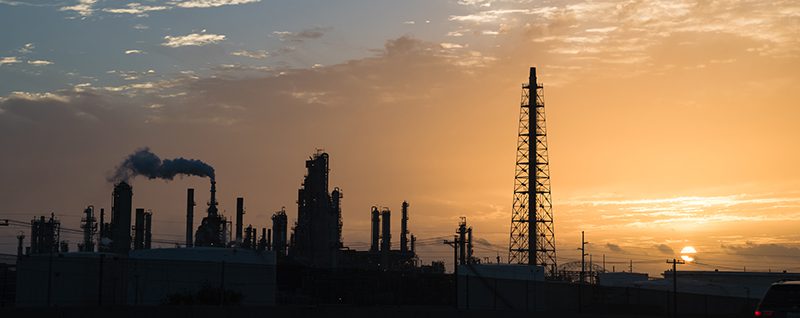
In May, the UK Government announced a full consultation on its Clean Air Strategy, a document outlining proposed actions to reduce national air pollution. Here, Steve Billingham, CEO of gas instrumentation firm Duvas Technologies, discusses why benzene should be considered in the strategy and why he believes it should be included in mandatory air quality monitoring.
Last month, the Department for Environment, Food and Rural Affairs (DEFRA) opened a consultation on the eagerly-anticipated Clean Air Strategy. Michael Gove has since called for responses from industry, environmental NGOs, the health sector and general public.
In the draft document, several pollutants are mentioned (particulate matter, ammonia, nitrogen oxides and sulphur dioxide). However, there is little mention of other damaging pollutants – benzene for example.
The hidden killer
Commonly found in vehicle emissions, cigarette smoke, and as a by-product from the production of crude oil, almost everyone is exposed to benzene. The chemical is a highly flammable and volatile liquid, which evaporates at room temperate and can be cancer-inducing if inhaled.
The World Health Organisation (WHO) has said that there is no safe exposure limit for benzene. Once in the bloodstream, benzene travels throughout the body and it is metabolised in the liver and bone marrow. The metabolites created are usually flushed out in urine but, if retained in the body, there is a possibility they can cause serious harm.
Exposure may be through inhalation, ingestion or absorption, and is common for those working in close proximity to sources of the chemical (fracking sites, petrol stations and distilleries, for example). However, Occupational Exposure Limits (OELs) fail to be uniform, and, even though Europe’s Committee for Risk Assessment is calling for tighter limits, consistent air quality monitoring does not occur.
Brief exposure to high levels (10,000 parts per million [ppm]) can result in death. Lower levels, around 700 ppm, can cause vomiting, dizziness and unconsciousness. Long-term exposure to low levels can be just as severe in its effect as a one-off high dose. This means that a high level of accuracy is needed in monitoring equipment, capable of detecting even low-level exposure.
Long term exposure to benzene can cause serious issues surrounding the production of red blood cells which are responsible for the immune system. As a result, exposure can lead to anaemia, problems with fertility and even acute myeloid leukaemia which is a cancer of the blood-forming organs.
Benzene is a carcinogen which can be compared with asbestos. Like asbestos, the gestation of benzene-related symptoms can be as long as 20 years.
Benzene was referenced in the 1997 amendment to the Carcinogens Directive, which adopted a minimum dermal exposure level. It was then further reduced to 1 ppm skin exposure over 8 hours in 2003. But with the latest research identifying that even parts per billion (ppb) levels are highly dangerous, does this legislation go far enough?
Benzene in the clean air strategy
In the Clean Air Strategy consultation draft, benzene is referenced once (under a list of pollutants) in regards to ambient air quality standard. The more high-profile pollutants include fine particulate matter, ammonia, nitrogen oxide and sulphur dioxide. These all have a spotlight in the paper with their sources, impacts and tactics to limit exposure carefully identified. Benzene takes somewhat of a back seat, clarifying a lack of knowledge and application of the chemical’s hazardous properties. From this we can gather that no further action is going to be taken on benzene that is not already legislated.
But with the threat of serious health issues through long-term exposure, benzene must be considered in the Clean Air Strategy as a primary hazard, not just a passing thought. What’s more, we believe widespread monitoring is essential to dictate real-world, real-time risk.
The importance of monitoring
In the UK, legislation limits safe levels of benzene exposure to no more than 5 µm m-3 (1.57 ppb). According to DEFRA, there are 35 UK benzene air quality monitoring sites for the whole of the UK, whereas more high-profile pollutants such as SO2 and NOx have over 4 times as many (161 locations). Monitoring sites tend to be located in residential areas, rather than densely-populated urban locations or industrial sites.
In my opinion, this must be our first priority! Monitoring must be increased and undertaken in representative locations. Legislation should include a commitment to monitoring.
Currently, benzene air quality data is difficult to obtain and so transparency and ease of access are two welcomed qualities of the Clean Air Strategy. The risk of harm to UK residents can then be fully identified. However without legislative powers, there is little incentive to carry out long-term monitoring.
Using UV spectroscopy with benzene
Duvas Technologies recognises the importance of measuring benzene. Having identified the negative health implications, we embraced UV spectroscopy technologies to develop a portable monitoring device that can measure multiple harmful gases, including benzene, to a high level of accuracy and precision.
The DV3000 can be fitted to a bespoke vehicle and used to collect fenceline monitoring data (delivering multiple gas readings every second). Providing ppb-level detail, this analysis delivers immediate insight. It is capable of capturing data, levels and concentrations of a variety of working environments, while providing app-connectivity for ease of use in the field. Temperature, humidity and pressure is also monitored continuously to consider variables. Readings are fast, accurate and the device can be ready for use within minutes of starting.
Duvas Technologies continues to lead the benzene debate and is committed to broadening its understanding of low-level, long-term exposure. Working globally with leading petrochemical industries to safeguard their workers, Duvas has already carried out numerous studies worldwide.
One recent UK study saw Duvas deploy its DV3000 system around the perimeter of two fracking sites in the UK. Monitoring VOC levels multiple times per second, Duvas created comprehensive fenceline maps reporting concentrations of 13 different species of hazardous pollutants.
Through careful analysis, cross-referenced with safe exposure levels set by the World Health Organisation, it was possible to identify areas of gas pollution for each site. Each report was compared to a control test, and further studies will now take place allowing trend analysis of change and pollution over time.
Insights such as this give petrochemical companies time to act on improving air quality not just for staff, but the surrounding communities too. We believe DUVAS connects technology and industry to take the lead on air pollution improvements.
Following the release of the Clean Air Strategy consultation draft, we believe there is a significant need for benzene to rise up the planning and legislation hierarchy. Not only this, but precise and detailed monitoring should be mandatory to ensure that enough is being done and to safeguard workers and residents across the UK.






